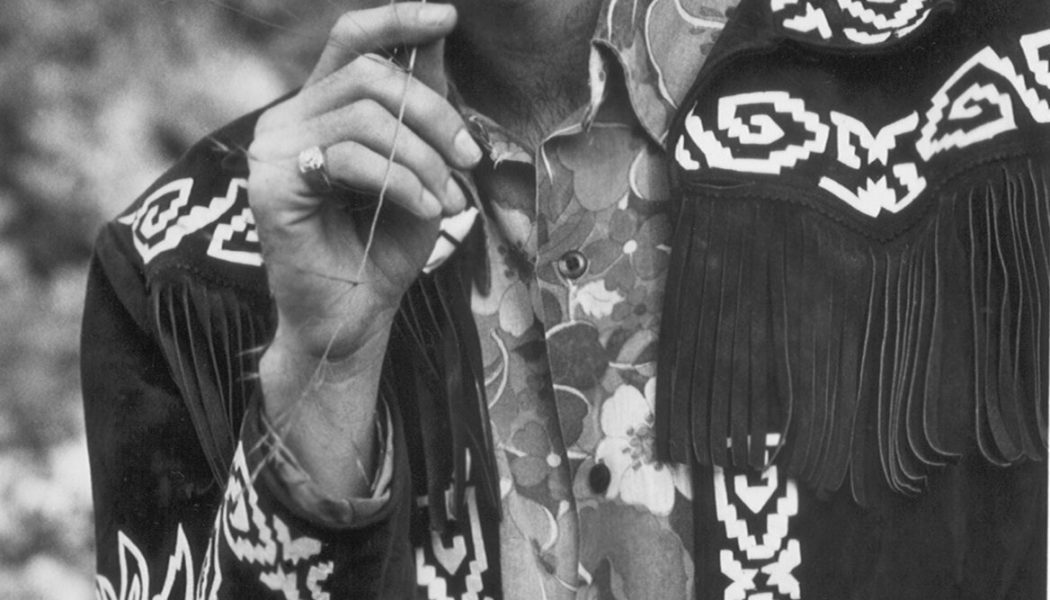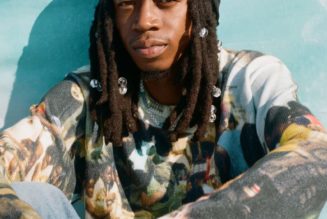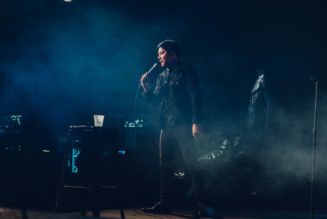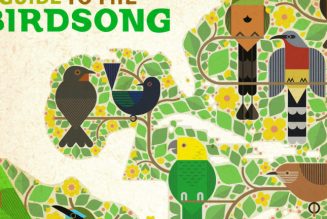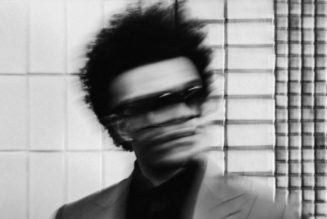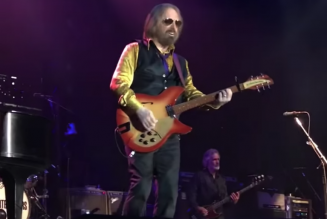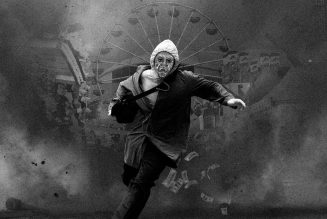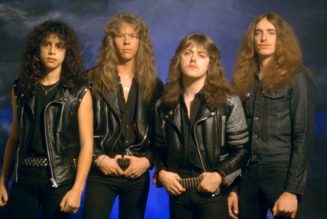Three of the 100 are in this picture! The Rolling Stones, in 1964, from left to right: Bill Wyman, Mick Jagger, Keith Richards, Charlie Watts and Brian Jones.
The problem with lists like this is they are invariably bullshit. So our prime objective was to make sure we didn’t do a bullshit list.
I’m not saying we did a scientific one either. Because that isn’t possible — actually, it is, if you wanted some compilation of who sold the most records/concert tickets/has the most fans/got the most death threats, etc., and someone could come up with a bunch of very empirical metrics and create a “heat index” or something, and could deliver an actual scientific ranking! But we, um, didn’t do that.
In fact we didn’t even, technically, do the “we.” I picked the list. I ranked everyone and along with several excellent SPIN contributors and the editor Daniel Kohn wrote the entries. So this is as subjective as it gets!
I say “I did this” not out of vanity — I know, for once, right? — but because this is so subjective, I think it’s important to take responsibility. This is opinionated! Deliberately. Because, you know, that’s rock ‘n roll too. Rock is not science!
But there’s context, and, I would claim, a great deal of thoughtfulness was put into the creation and execution of this. And honesty — we say what we really think, whether that’s “safe” or politically correct be damned (as, no doubt, I am forever now, after this).
The notion of a “Rock Star” was first mentioned in 1960 — before that and for a while after as well, the biggest musicians of this new, fast evolving musical genre were simply pop stars. There came a time in the mid ’60s when rock ‘n roll overwhelmed the pop charts, and the previous giants of record sales, the Sinatras and Miles Davises, receded into the distance, and the generational seam between the Baby Boomers and their parents was sealed. So this is a list of rock stars, not necessarily the best musicians, or most important songwriters, (although we won’t have missed many of them). A star is, perhaps by definition, undefinable. They just are. They’re luminescent. Even when, in some cases, they didn’t want to be.
There are four Irish rock stars, and 33 dead people on this list. Eight groups have multiple rock stars on the list, and four of those have three, including one group, the Yardbirds, that featured three here enshrined who all had their significant success in later bands.
There aren’t a lot of young people on the list — except, ahem, some of the dead ones — because to be among the greats requires having had an impactful career, and that is more or less achieved over time. There are a couple of rappers here, because they transcended their success and status in rap.
There are several assholes on this list.
100 Elvis Presley
The day Elvis died, Johnny Rotten was being interviewed by Rolling Stone and upon being told the King was dead, said: “Good riddance to a fucking load of old rubbish!” While a bit harsh, as music criticism it isn’t that far off. Elvis was a very average musician, with a very good voice that came along at the right time, to be the white, commercial, acceptable bridge from what was then known as Race Music to what became known as Rock ‘n Roll. Black musicians were selling their music to white kids, but it took a white star to make the music an industry. Sure Elvis had some great songs — I can’t think of any — I mean that are great, except “In the Ghetto” which arguably Nick Cave did better — but they’re there. And he had charisma and caught lightning in a bottle and became the guy who cut the ribbon for rock ‘n roll, and it was here to stay. Bob Guccione, Jr
99 Gary Puckett
Gary Puckett & The Union Gap (named after a city in Washington, near where Puckett grew up) were a moment in the late ’60s, elevated by Puckett’s rich tenor voice, which contrasted with most of what you heard on the radio. The band had hits with “Young Girl” (a song about fearing your girlfriend is underage — Jimmy Page did not cover this, just saying, as an aside) and “Woman, Woman” and, under whiz producer Jerry Fuller, were becoming a top act. Gary tired of the ballads that Fuller was giving them, though, and rebelled, and the relationship ended. But it was on his first Fuller-free album, in 1969, that the band put out one of decade ending classics, “This Girl Is a Woman Now.” (At least this one they knew was old enough.) BGJ
98 Bono
Many people — chiefly among them Bono — would expect to see his name at the top of this list, elbowing David Bowie and Mick and Jimi, not at the bottom where, frankly, he belongs. Because he’s a bore. Great singer, yes, and writer/co-writer of some classic, anthemic U2 songs. But, well, we’ve really just had enough of him, haven’t we? Jesus Christ himself would have taken a day off from being so relentlessly virtuous! And he would have stopped after Rattle and Hum, ending on a high. BGJ
97 Tina Turner
From Tina Turner’s raucous, edgy early performances of “Nutbush City Limits” and “Proud Mary” to an unexpected, massive second act — restrained but no less passionate hit ballads of the ‘80s like “What’s Love Got To Do With It” and “We Don’t Need Another Hero” — Turner exudes a power, pride and poise as commanding as her voice. Simply “The Best” indeed. Katherine Turman
96 Micky Dolenz
Hey, hey…did you know that the Monkees outsold both the Beatles and the Rolling Stones in 1967? They were a TV fabrication, but along the way made some truly great, rousing and enduring music, with chart-topping hits like “I’m a Believer” and “Last Train to Clarksville.” Well, here’s your chance to bow down: Mickey, who had been a child TV star and gave the group a rounded charisma, and Mike Nesmith, the remaining surviving original members, are kicking off their farewell tour this fall, so you can thank them for the memories—and relive some of your childhood—by buying a ticket. Liza Lentini
95 David Lee Roth
When your nickname is “Diamond Dave,” that should say it all. But it doesn’t come close. Easily the fastest tongue in the West (for his amazing one-liners), Roth brought the attitude to Van Halen. His high-energy routine was the perfect counterbalance (and foil) to Eddie Van Halen’s eruptions that see the band hit heights never expected for a Pasadena party band (and ultimately be their downfall). Roth took decadence and dalliances to another level…and if not for him, we’d never have such reverence for Brown M&Ms as we do now. Daniel Kohn
94 Frank Zappa
The man who named his children such peculiar names like Dweezil and Moon Unit was actually a straight-laced cat who didn’t embrace the drug culture of rock, leaning more towards a jazzy-innovative rock sound in the ‘70s. Zappa released a mind-bending 60 albums in his 30-year career, including the conceptual double album Freak Out! — only the second double rock album ever released at the time (June 1966). Zappa’s in-studio skills were matched by his ability to get behind a camera, directing music videos, short films and features. In the mid-’80s Zappa rediscovered politics and memorably testified against music censorship at the infamous Parents’ Music Resource Center hearings in 1985 in Washington, D.C. Jason Stahl
93 Paul McCartney
“Our Paul” as a whole generation of British people, mainly old women, curiously, called him, is one the greatest songwriters ever, and a singer gifted with an Angel’s voice, and the star of the greatest band of all time, Wings — no, I’m kidding! The Beatles, of course! But he only gets on our list for Wings, which had some superlative rock songs, and one of the great rock albums, Band on the Run. The Beatles liked to think of themselves as a rock band, and probably were when they were playing covers in Hamburg, but really, as the immortal group we know, they were a pop group. The best ever, without a doubt. And Paul, unlike John Lennon, was awkward, and in fact highly unsuccessful as a rocker. But on Band on the Run he propels chest cleaving songs like “Let Me Roll It” and “Jet,” and the title song, which is almost exactly like a good Beatles song, only rockier. I also loved “Picasso’s Last Words (Drink to Me).” Venus and Mars was great too. After that came… “Mary Had a Little Lamb”? Did it come before? Whatever. BGJ
92 Brian Jones
Jones really did die before he got old, and is a charter member of the eerie “27 Club” of rock superstars who died at the tragically early and precious age of 27. He was found dead in his swimming pool, a presumed accident following drug overindulgence, a possible suicide, a whispered rumored murder. I guess it doesn’t matter anymore, if it ever did. Brian was the founder of the Rolling Stones (not Mick!) and its true musical guiding force. He was also the ultimate rock star, still a nascent concept in the mid-’60s, fashion setting, sexy and sex-soaked — he, more than Mick originally, was the ones the girls all wanted. He flamed out, inevitably, dying just weeks after leaving the band because he’d become disillusioned with their musical direction. BGJ
91 Axl Rose
Decked out in a kilt, a ball gag around his neck and his strawberry-blonde hair ratted high, Indiana’s Axl Rose was a new breed of rock star on the L.A. scene in the mid-’80s. With his lineup of debaucherous street urchins, early Axl was a pinup-worthy screamer who captured the personal decadence of his Hollywood on the classic Appetite For Destruction. Roses’ piercing bluesy vocals and arena-ready stage presence made him the only choice to fill in as AC/DC’s frontman in 2016, bridging the distance between the fabled Bon Scott and lusty vocalist Brian Johnson. KT
90 Steven Van Zandt
He’s just a rock star — he just is. He was originally and is again Springsteen’s musical consigliere (just as he was Tony Soprano’s, really). His place in the E Street Band is rock immortality right there, and his solo career has been stellar even if not on the same commercial level as with Bruce. He’s in it for the joy of playing rock ‘n roll, and that’s what we get from him, the unadulterated, sheer joy of rock ‘n roll. BGJ
89 John Fogerty
John Fogerty was the dragon’s breath of Southern Rock. Before Creedence Clearwater Revival (and no matter that they came from San Francisco) there were Southern rockers, and most of rock ‘n roll comes from the Blues, but was there Southern Rock? I don’t think so. I think it was Fogerty’s voice that solidified it from the swirling primordial mists. Creedence was just such a great band with just such a fresh and joyous sound, and it was Fogerty’s voice and guitar playing that made songs like “Have You Ever Seen the Rain?” and “Looking’ Out My Back Door” curl around us, and that made “Proud Mary” and “Up Around the Bend” rock so hard. His solo career never matched those heights but still gave us some fine music. BGJ
88 Keith Emerson
Keith first came to attention as the keyboardist for English rock group The Nice, who had a moment, but you kind of had to be there. He left the group in 1970 to become part of one of the arena playing behemoths of the decade, Emerson, Lake and Palmer. They blended classical music — actual classical compositions, to be clear — with electric and electrifying rock ‘n roll. They were known as Prog Rock, a weak classification for truly exciting experimental rock music. They were contemporaries of, and had to be an influence on, Queen, who also formed in 1970. Their sound was so huge and wide even arenas couldn’t fully contain it. Carl Palmer was as skillful a drummer as any of the great jazz drummers and light years ahead of just about any rock drummer, and Greg Lake was the guitarist and booming, ethereal voice of ELP, but Keith was the musical blood, the genius always furiously trying to get out of the instruments. An incomparable musician. BGJ
87 Jerry Garcia
Raise your hand if you would have guessed that a bespectacled, bearded (though not at first) and slightly burly singer-songwriter from San Francisco would epitomize the counterculture? Those are just the broadstrokes of what Jerry Garcia, unassuming rock star did. He and the Grateful Dead didn’t just counter-culture, they made their own culture. They pretty much spawned a new genre (you know, that thing called jam bands) that some love and some hate, and built a community that is still fervent to this day. Though some forms of the Dead have existed since Garcia’s all too early death at the age of 53, they never matched what the singer/guitarist, due to his intricate playing style, brought to the band. DK
86 Liam Gallagher
The only rock star to make a parka look fashionable, Liam Gallagher is the epitome of the in-your-face snarl that reflects his northern England hometown. Swaying his arms behind his back during the band’s live shows and even heckling his brother from the audience at others (most famously at MTV Unplugged) this supersonic rock n roll star has even greater achievement: making Manchester City FC relevant. No, Sheik Mansour didn’t do it, but the club’s no. 1 fan (sorry, Noel) reflects not just the heart-and-soul of the City fanbase, but the heart-and-soul of a blue-collar city that got the hero it needed at the onset of the Britpop movement. DK
85 Otis Redding
Soul star Otis Redding had the voice of an angel, too subtle and divine for this undeserving, debased world. He could’ve rested on the laurels of his exceptionally classic “(Sittin’ On) The Dock of the Bay” alone, which seems like a thousand minds went into the making of it, but it garnered all its enormous fame after his premature death at 26. Logan Blake
84 Lemmy
Hard-living, hard-drinking, hard-rocking Motorhead main-man Lemmy looks like the guy your mother warned you about. His rumbling, instantly identifiable bass playing and gravelly voice (and too-high-mic), iconic sideburns and mole made the late, loved Lemmy one of a kind. The humble road dog walked it like he sang it, vis a vis “Ace of Spaces”: “Playing for the high one, dancing with the devil / Going with the flow, it’s all a game to me.” KT
83 Paul Westerberg
The lead singer/guitarist frontman of The Replacements defined the unforgotten of punk with the band, before slowing down to more melodic new-wave, but without sacrificing any of the talent or energy – only evolving into something more tamed and restrained, from song titles like “Fuck School” to “Kiss Me on the Bus.” LB
82 Morrissey
Meat may be murder and Moz may have inspired a generation of loners with his earnest songwriting, but he’s become such a total shithead in the past decade that even The Simpsons are making fun of him. That doesn’t stop the Smiths from being one of the most influential bands in history though and for the world from wanting them to reunite — politics be damned. Josh Chesler
81 Ritchie Blackmore
The English guitarist and founding member of Deep Purple has said to have been “stuck in a musical no man’s land.” The legacy that was begotten from his captive “no-zone” is forever immortalized through every beginner guitarist learning the ultra-famous “Smoke on the Water” riff, sending him into the Rock and Roll Hall of Fame in 2016, but now, more importantly, into this list. LB
80 David Byrne
Big suit? Check. Some of the greatest alternative tracks of the ‘80s? Check. Sold-out Broadway show? Check. Introduced world music into rock n roll? Check. Has pretty much always looked like your weird uncle? Double-check. JC
79 Billy Corgan
Forget the accolades he picked up as the driving force of the Smashing Pumpkins, Billy Corgan was by far and away the biggest rock star to ever appear on the cover of PAWS Chicago Magazine — and he did it multiple times at that. He’s one of the greatest alternative songwriters of all time and yet still manages to piss people off pretty much all the time. A rare talent indeed. JC
78 Madonna
If you don’t believe in destiny, have a think about a Catholic woman born in the 1950s, named for a blessed symbol of virginity, who succeeded against all odds at making a career out of shocking and shaking shit up. For whatever colossal influence Madonna had on music—its industry, its women, its everything—over the last 40 years, it’s nothing compared how she’s forever influenced the way the entire world views “the second sex”. Oh, yeah, and she’s also the best-selling female artist of all time. LL
77 Alice Cooper
School’s out. For ever. BGJ
76 Nick Cave
The lanky, literary raconteur taps into the underbelly of life to sing tragicomedies of miscreant characters operating on the sordid side. All within an eclectic mash-up of what you might call arty post-punk, noise, and other, non-specific unsettling sonics. Nick Cave is the Prince of not quite Darkness, but the Underground. LB
75 Bob Mould
The take-no-shit-from-nobody Bob Mould formed Hüsker Dü (named after a Danish board game) with Grant Hart and Greg Norton in St. Paul, Minnesota in the late ‘70s. They entered the ‘80s with a bang louder than their hardcore sound, releasing six albums in less than six years! The most notable of those was the concept album Zen Arcade, which had 23 mind-blowing tracks. The former frontman transitioned from performing punk to experimenting with electronic music once he felt comfortable with his sexuality, announcing to the world in the late ‘90s he was gay. JS
Click NEXT at the end of the text to see the next group
